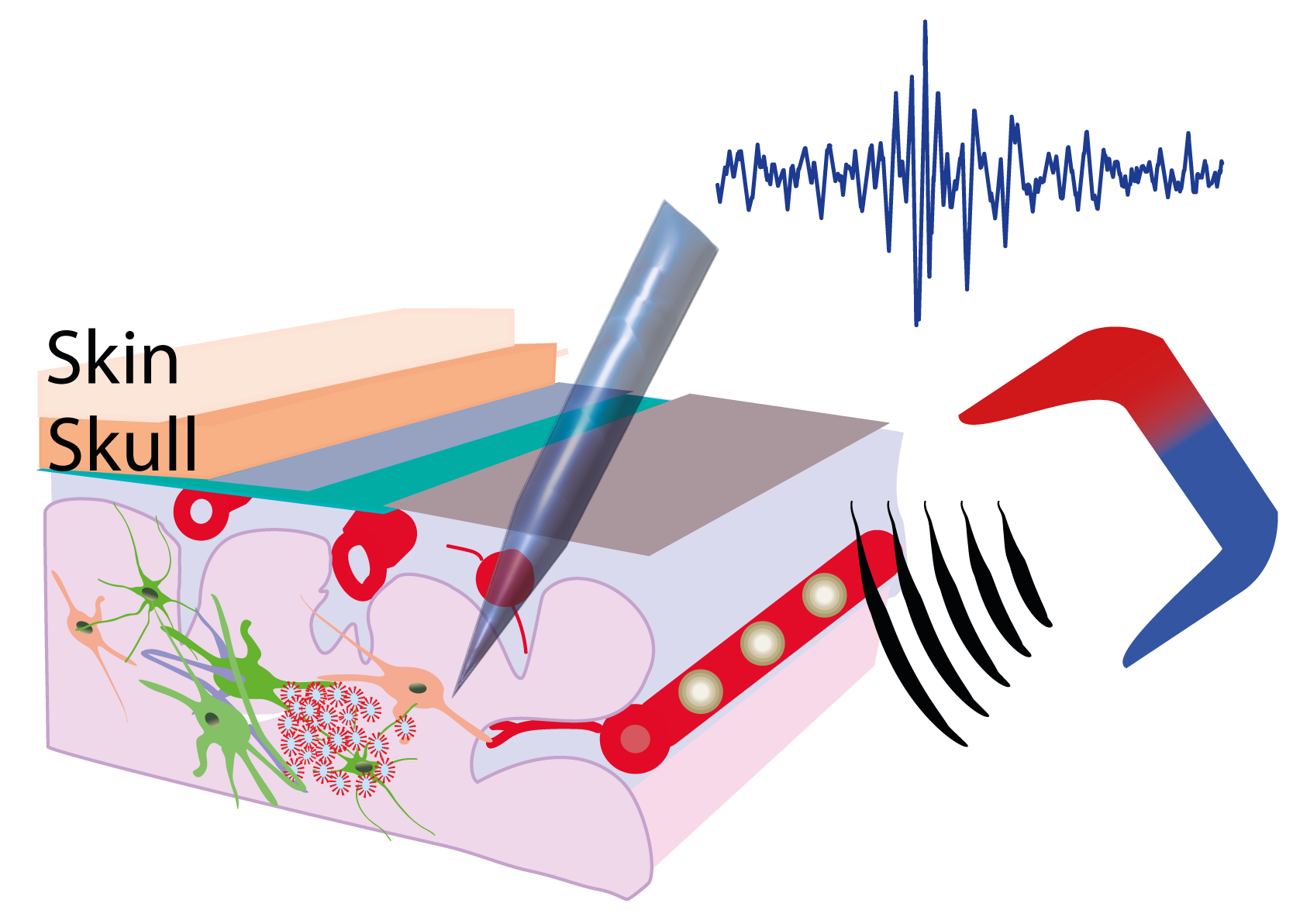Advancing Brain Stimulation with Nano Devices

Research Area:
Neurophysiology and Brain StimulationResearchers:
Alia Benali; Vishnudev Ramachandra; Martin A. GieseDescription:
In neurotherapy, brain stimulation is used to apply electrical, magnetic, or pharmacological stimuli specifically to certain areas of the brain to modulate neuronal activity. This advanced technique is employed in human medicine to treat a range of neurological and psychiatric disorders such as depression, Parkinson's disease, and epilepsy. Existing methods, such as deep brain stimulation (DBS), transcranial magnetic stimulation (TMS), and transcranial direct current stimulation (tDCS), each have their limitations: they are either invasive and require surgical intervention, or they are not localized, and their reach is limited to the upper structures of the brain.
Nanoparticles open up new possibilities in this field. They could be used to bridge the gap between invasive and non-invasive methods by enhancing the effects of non-invasive brain stimulation and accessing deeper brain regions. For example, the spatial resolution of TMS can be significantly increased through the use of magnetic nanoparticles. Additionally, nanoparticles enable the targeted delivery of therapeutic agents to the brain during stimulation, further enhancing the therapeutic effect.
Another crucial advantage of nanoparticles is that the tissue damage during invasive application is minimal, especially compared to the implantation of rigid electrodes. Furthermore, nanoparticles with magnetic properties can be positioned and moved non-invasively within the brain after application, allowing for dynamic and adaptable therapy.
In this project, we aim to redefine the boundaries of brain stimulation through the innovative combination of various technologies. We work in interdisciplinary teams and collaborate with different research groups to bring a wide spectrum of expertise and perspectives. Our goal is to advance the development of more effective and individualized treatment methods for a variety of neurological and psychiatric disorders, thereby making a significant contribution to improving patient care.
 |
Cooperation Partner: Metin Sitti & Erdost Yildiz Cornelius Schwarz Ziad Hafed Axel Oeltermann |
|
The image displays electrophysiological recordings from a neuron that is activated by MENPs (Magnetoelectric Nanoparticles). |
